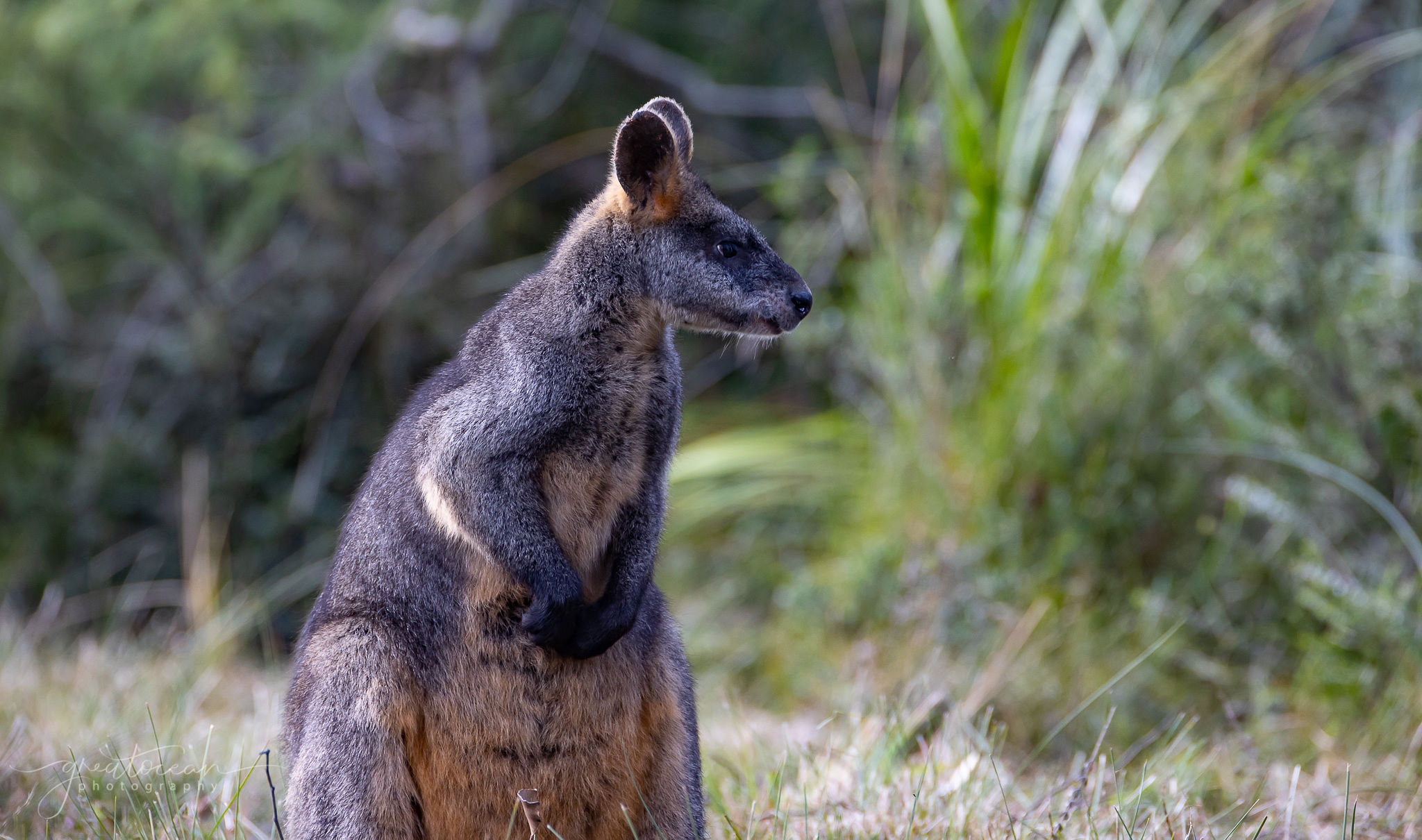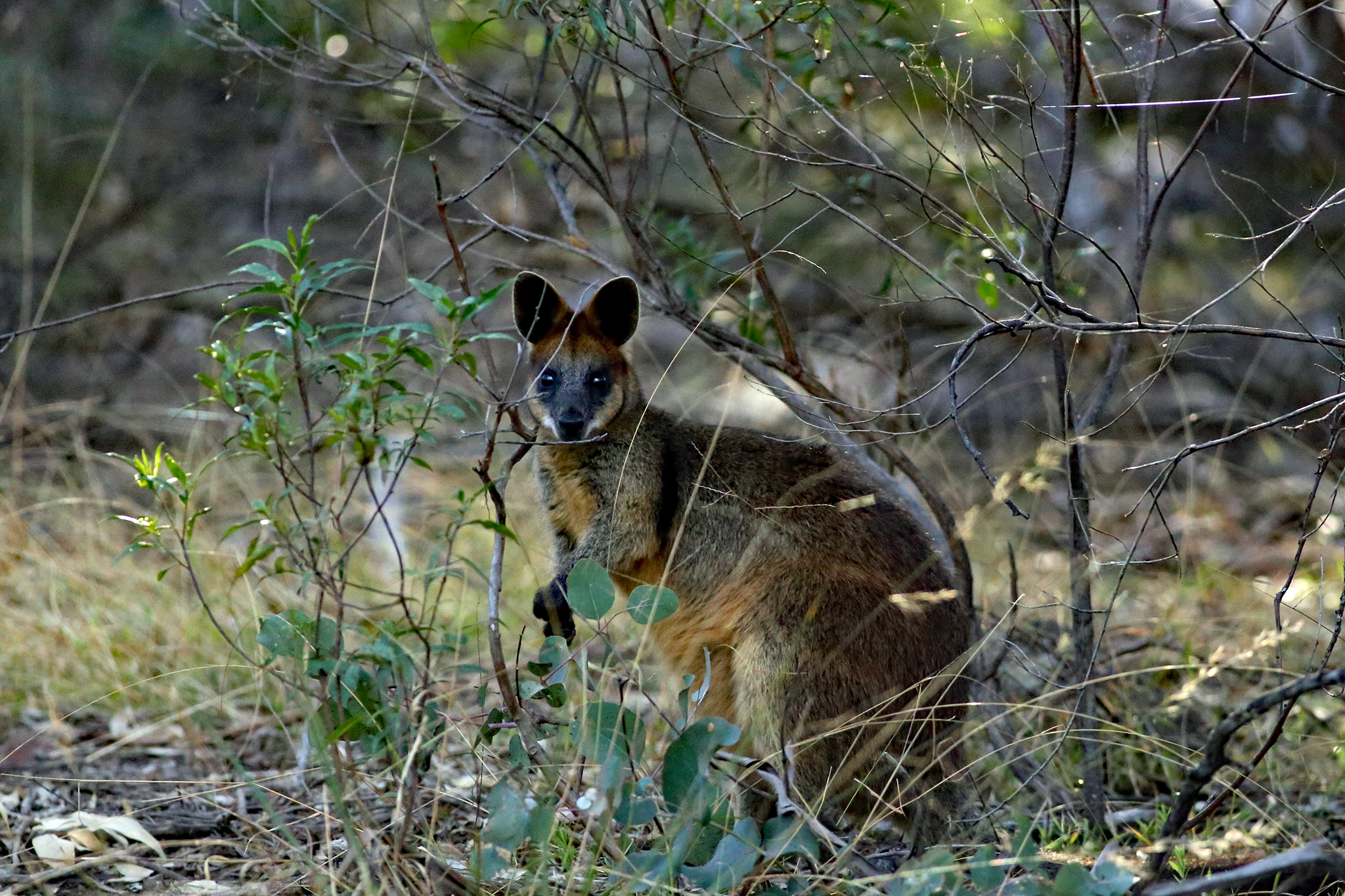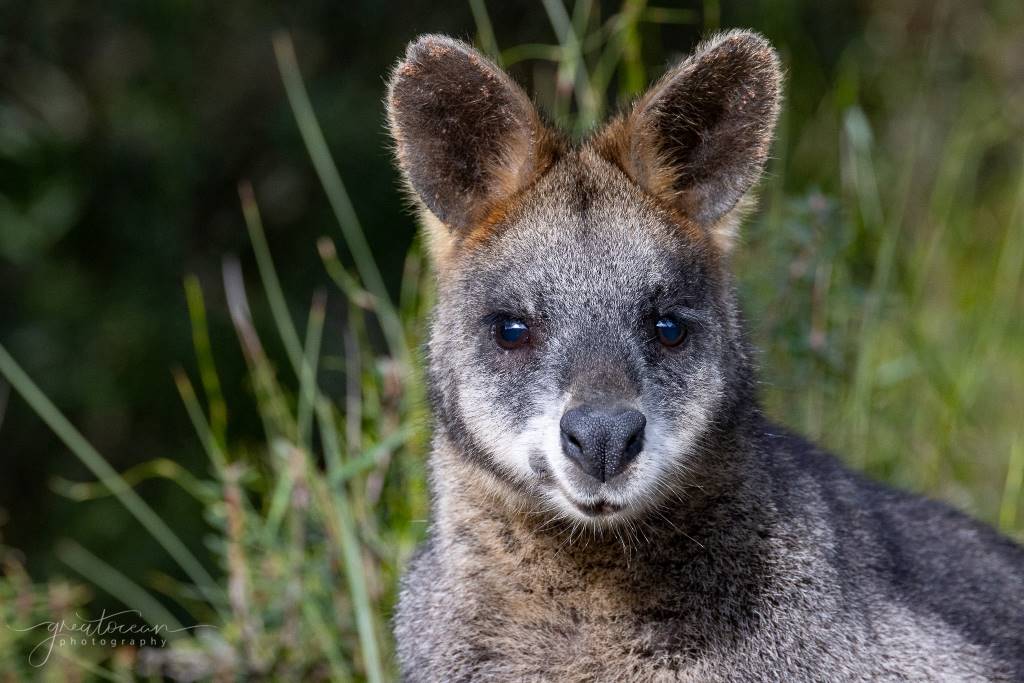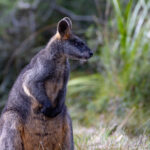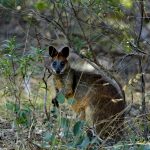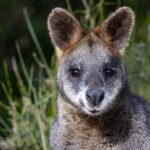Swamp Wallaby
(Wallabia bicolor)
If you see something that looks like a small kangaroo, on its own and in more bushy areas, it’s more likely to be a wallaby.
DESCRIPTION
Looking very like small kangaroos, swamp wallabies are darker than their eastern grey kangaroo cousins and have dark patches on the tips of their noses, tail, legs and forelimbs. They tend to live solitary lives and are generally very timid. At Wildlife Wonders, the swamp wallabies can often be seen way beyond the tree ferns in the temperate section of the walk.
Swamp wallabies are members of the marsupial family so (like kangaroos and koalas) the female gives birth to a tiny hairless embryo which makes its way through her fur to the safety of her pouch where it will remain for six months or so before venturing out to eat grass, but staying close until it is around a year old.
Swamp wallabies avoid open grasslands, farms and paddocks. They can be found in or at the edge of the bush, choosing fresh young plants, fungi and ferns, or grazing on the grasses at the side of the road. This makes them particularly vulnerable to cars, which probably cause more deaths than animal predators as these little wallabies are often foraging at dusk, and are hard to spot.
It’s important to keep alert and drive slowly, especially at dawn and dusk, to avoid hitting these beautiful animals.

